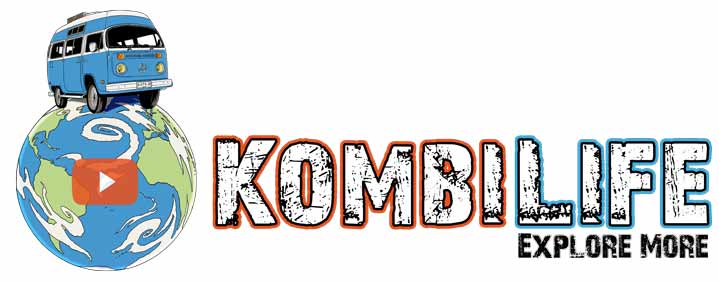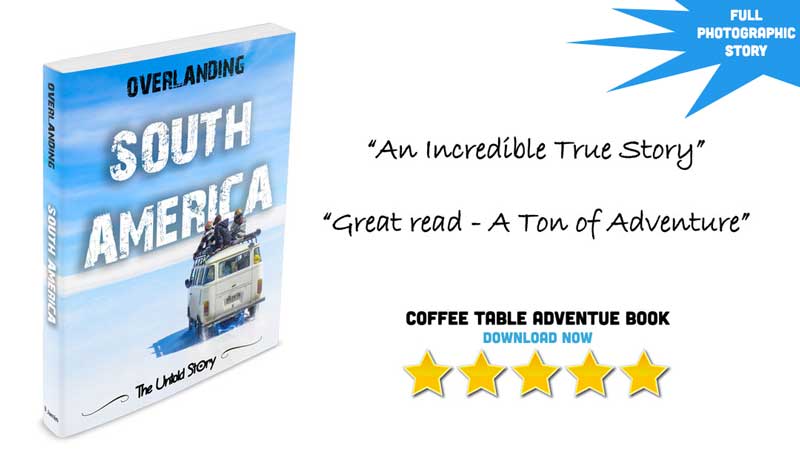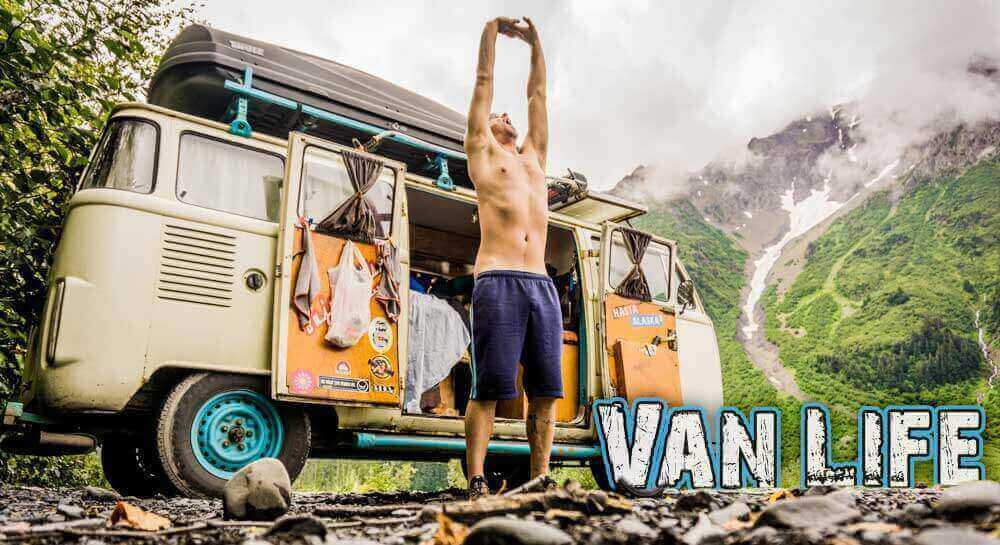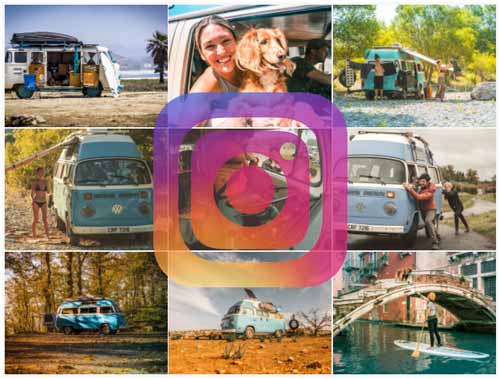Bolivia – VW Bus Road Trip
Chapter 3
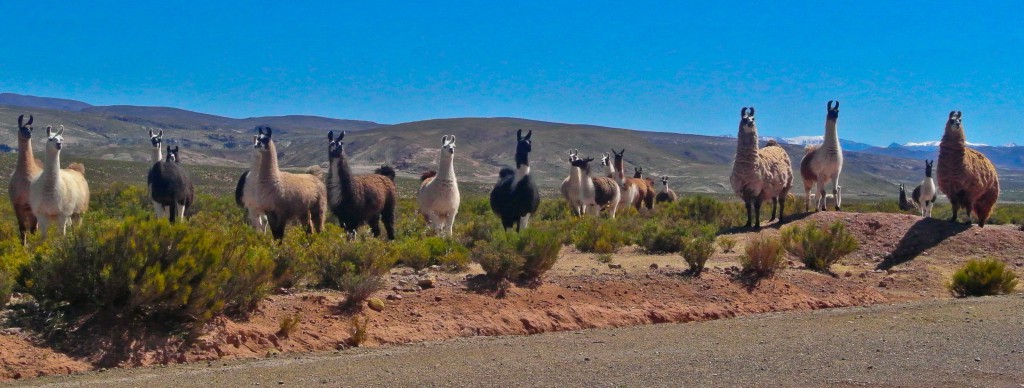
—On Top Of The Andes—
EVERY PERSON in the 6 man, 2 bus crew felt their anticipation rise with the increasing altitude as we inched across the desolate landscape and further away from the Argentine border. Unlike many land-border crossings the differences were easy to see and feel. It got colder, the people changed, and not just due to the traditional Bolivian clothing, but in their rosy sun-burnt cheeks too. Unfortunately all I could concentrate on was the increasing nausea of altitude sickness.
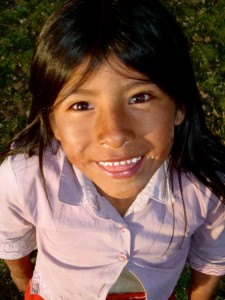
At 4090m, (13,420ft) Potosi is one of the highest cities in the world; a statistic both me and my Bus would have preferred to learn at sea-level than find out first hand. I had thought, whilst struggling along in 1st gear, that trying to limp our Kombi convoy through the twisty mountainous lanes of the mining town was hard enough, but trying to do any physical activity – like walk the streets looking for a VW mechanic – was almost impossible.
At the time I blamed my altitude-induced migraine for not paying attention to the antics of Maestro Pero’s carburetor overhaul, but on reflection I believed such sophisticated machinery to be beyond my mechanical capacity. I can tell you however, that the jets were changed to allow Co’Pito’s struggling engine to take a little more from the thin air. I remember wishing I could have changed some jets in my own lungs at the same time.
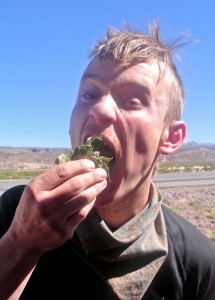
It was about this time that we were introduced to Coca leaves by a 4ft 6” grandmother wielding her crop in a wicker basket of roughly the same height. Unlike most areas of South America, the bitter coca leaves are not just legal in Bolivia, but considered by many a necessity. Taxi drivers in the capital would later defend their almost paralytic state of alcohol intoxication by reporting that they were fit to drive us home at 5am because they had a cheek full of the foul green stuff. Not one to miss out on a local custom and eager to try anything to cure the altitude sickness I loaded up on coca leaves, and took a large bite of the bitter lump of charcoal – the essential catalyst.
One cheek full soon because 2 cheeks full as we competed with each other to fit the most in our mouths. The benefits of this bravado meant that not only was I cured of any signs of altitude sickness, but I was able to drive for hours into the night.
We felt safer camping there, out in the wilderness and miles from anywhere with just llamas for company than in any of the cities we had passed through. Besides, be it day or night Bolivia, hands down, has some of the best skies any of us had ever seen.
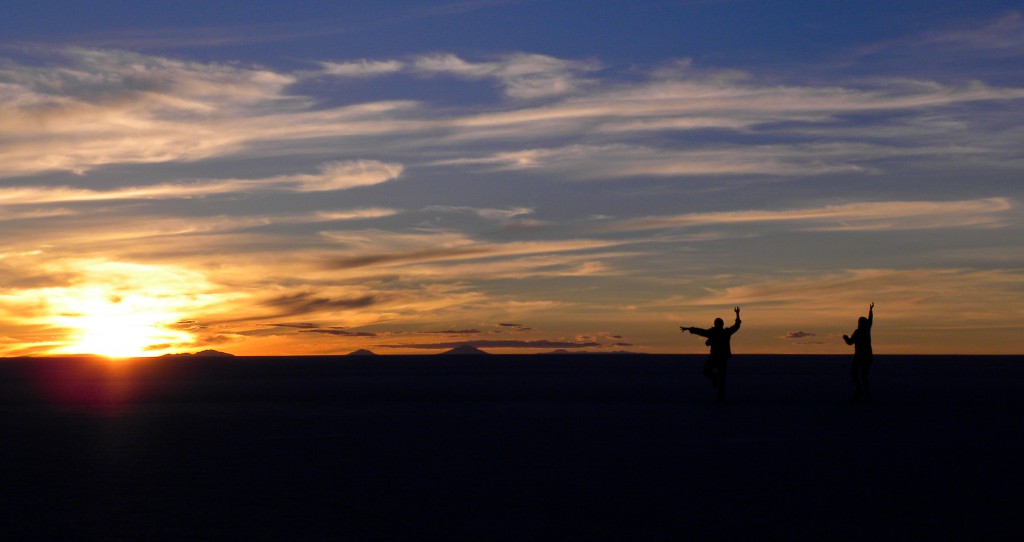
—Pass The Salt—
LIKE MOST of the trip up until now, other than a vague sense of direction we never really had a clear understanding of what was over the horizon. So I am sure you can appreciate that it came as quite a shock when the roads ran out and we were faced with 4,086 square miles of salt flats.
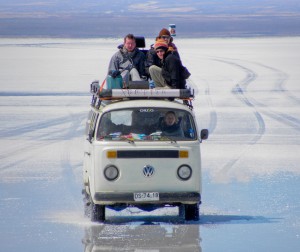
Unfortunately we weren’t able to cross the largest salt flats in the world with our principle navigation tool – a $2 compass – as we were told metal deposits under the surface which rendered it useless. We couldn’t afford GPS and our star-gazing skills were limited to picking out Orion, The Plough and the occasional passing satellite. Furthermore, camping on the crystalized expanse was also banned and the locals deterred us with stories of huge flooded areas more than a meter deep, preventing access to all but the hardiest 4×4 vehicles. Luckily for us, we put the VW Bus firmly in that category!
So with our precious 1600 air-cooled lovely protected from the salt by 3 plastic laundry bags hastily tied together, we set out under the envious stares of the foreigners queuing up at the tour agencies. We pulled the front seats out; strapped them to the roof with the speakers, wrapped up warm, cranked up the tunes and enjoyed the best ride of our lives!
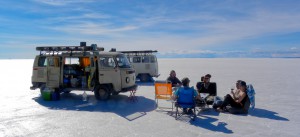
In all of the places I’ve ever visited or camped, I don’t think I will ever forget that night on the Bolivian salt flats. Tying a line between 2 VW Buses and playing volleyball with not a sole between us and the horizon on all sides; lounging on our Bus seats on the salt enjoying a fine glass of red and a delicious Bolivian steak with friends; watching uncountable comets dart across the pure nights sky whilst wearing every item of clothing we owned; waking up to 1cm of ice on the inside of the windows at -10⁰C, 3 in the bed and 1 in a tent on the roof, and dancing naked under a flock of pink flamingos at sunrise. Yep, it was pretty unforgettable.
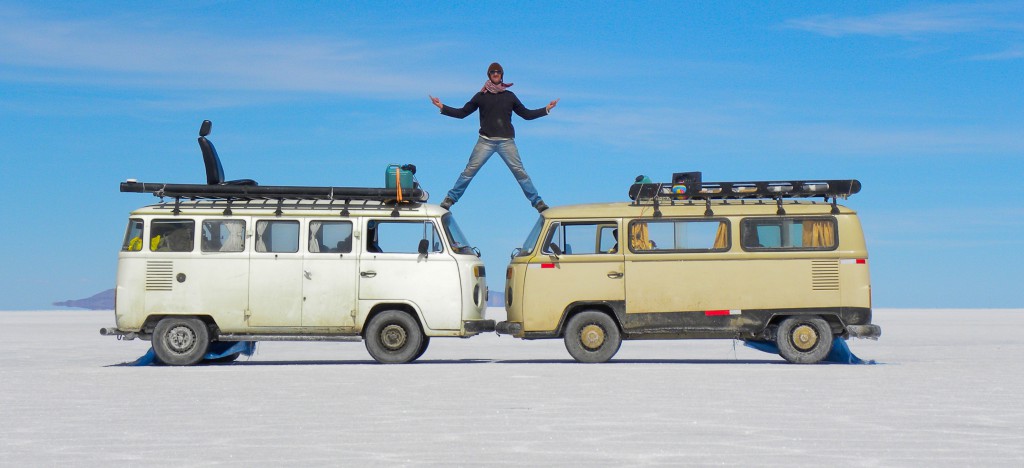
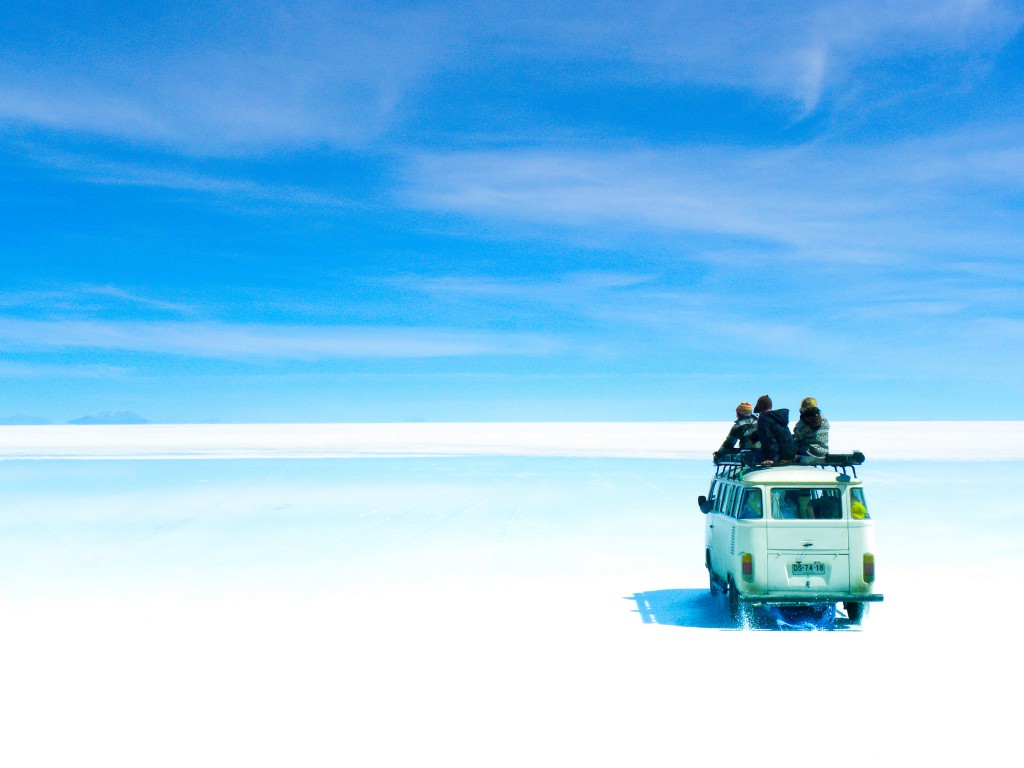
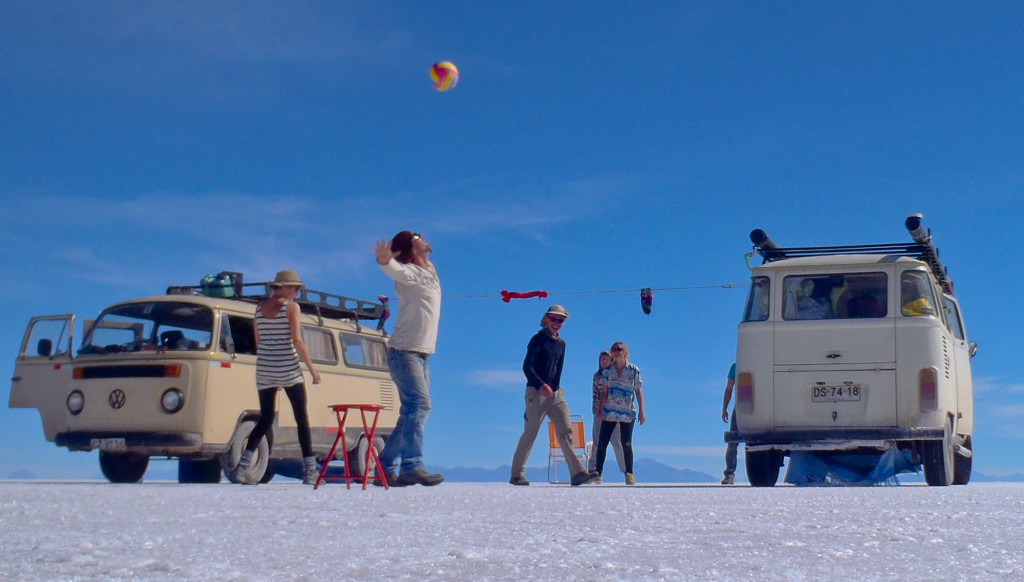
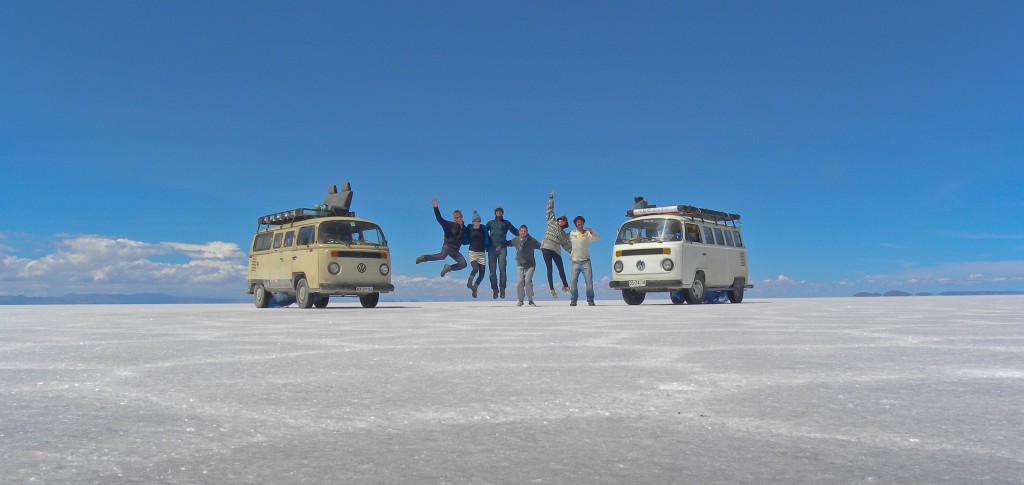
—Praising Mother Earth—
CONTINUING ON our journey north we found out first-hand why they call them “the axle-busting roads of Bolivia”. Whilst taking a 12 hour short-cut on a secondary main road, we came across a muddy section, deep enough to send even the locals out of their cars scratching their heads. We didn’t fare well. However, there wasn’t much we could do about a damaged drive-shaft and busted suspension so far from civilization so we inched forward feeling every bump 3 or 4 times over as we bobbed and rebounded down the path.
After another cold and frustrating night spent on our “short-cut” we reached a river crossing. As per team protocol we all bailed out and waded in to check for depth and bottom condition. Nobody was in the mood to spend the night in the river and a horrific storm was fast approaching. Needless to say we didn’t make it across. Dan, bless him, managed to find the deepest section in the river and get us firmly stuck in it’s icy waters. Unwilling to risk the other Bus, Kombi number 2 “Pepe”, went in search of a tractor to pull us out.

The good news was that this was surprisingly easy to find, the bad news was, something was up with Co’Pito. Whilst he started easily enough, he was running purely on battery power, the alternator wasn’t charging. The clock was now ticking; we had to find shelter from the storm and we had to do it fast.
Our roller-coaster of luck changed direction again as we pulled up to the first collection of mud huts that we happened upon in the Andean altiplano. There we were greeted as guests of honor by the simple quinoa farmers. We were instructed to make ourselves at home in the central village hut, a 12ftx12ft adobe shack with a Pachamama shrine filling one side. We prepared a feast from our rapidly depleting supplies, drank locally brewed beer and liquor and talked cultural differences with our Inca hosts. Before each toast to we’d pay homage to Pachamama the Inca earth goddess by spilling a little of the beverage on the floor or shrine in her honor.
—Kombi Life—
IT’S ALWAYS EASY to look back on experiences like these and only see the adventure. However when 4 people are living in a tiny Bus and are facing new challenges every day in the freezing cold, stress can get the better of you. After “Pepe” towed us through a couple of towns and we’d had the alternator repaired, our situation took a turn for the worse. The Swiss couple were robbed of not just their valuables, but all their clothes too – clean and dirty. Tyler grew tired of sleeping on the roof in his tent and decided he would leave the Hasta Alaska crew, which by that point was a decision welcomed by all.
His final leg of the trip was quite memorable, a drunk petrol station attendant wouldn’t allow us to leave (for over an hour) until we had drunk a bottle of chicha the local alcohol, accepted his 75% discounted fuel (at 20c per liter he was practically giving it away) and agreed to take 2 puppies, that he threatened to kill if we didn’t. Rising up again over a 5000m pass, we approached the dangerous capital, La Paz, on a Friday night – cheeks stuffed with coca and again wearing every item of clothing we owned.

What we saw as we descended into the bright lights could have come straight out of a Hollywood movie. Fights were braking out on every block corner, women in traditional clothing and bowler hats were beating men with vicious open-handed attacks, there were at least 6 car crashes in the first kilometer and absolutely no police. It was like Armageddon. We were so scared that we had all of the kitchen knives out and we didn’t stop at 1 red light. We turned out of the ghetto at the first opportunity and still have no idea to this day what was going on.
If getting into the highest capital city in the world was intimidating, getting out again proved to be chaotic.
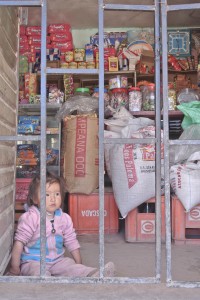
Firstly we were robbed by a ninja-like thief, who managed to open the bus door and remove Sharne’s handbag whilst she was sleeping. At the time of the crime, there was one mechanic working on the driveshaft underneath the Bus and another and myself working to correct the recent bad installation of the alternator at the back. We all felt bad about our lapse in security, not least of whom Sharne, who not only lost all her money and cards but her brand new top-of-the-line camera and passport too.
For 26 hours we tried to leave the highest capital city in the world, but try as we might we couldn’t find a hill that Co’Pito could make it up. After a day of searching we did finally find a heavy-traffic route but not before causing an accident backing down the twisty lanes.

By the time I was reflecting back on the past 4 months of the adventure I was in-between Bolivia and Peru overlooking the largest lake in South America, Lake Titicaca. We’d just bribed a border official with Coca-Cola to overlook our illegible paperwork. I’d experienced major Bus failures and broken down in the middle of nowhere. We’d been robbed. I’d said goodbye to Tyler, the Swiss couple and “Pepe” – the ‘Kombi Convoy’ was over for now at least. Worse still, I had to part company with the lovely Sharne as she returned to the capital in pursuit of a replacement passport. This was particularly hard because of the romance that had developed between us in the previous weeks. It felt like the closing of an immense chapter of the journey, and the start of a new one.
I left Bolivia with just one passenger, and felt the worst of the problems were behind me, if at the time I had known the truth of what was to come, I probably would have turned around and headed back to Chile!
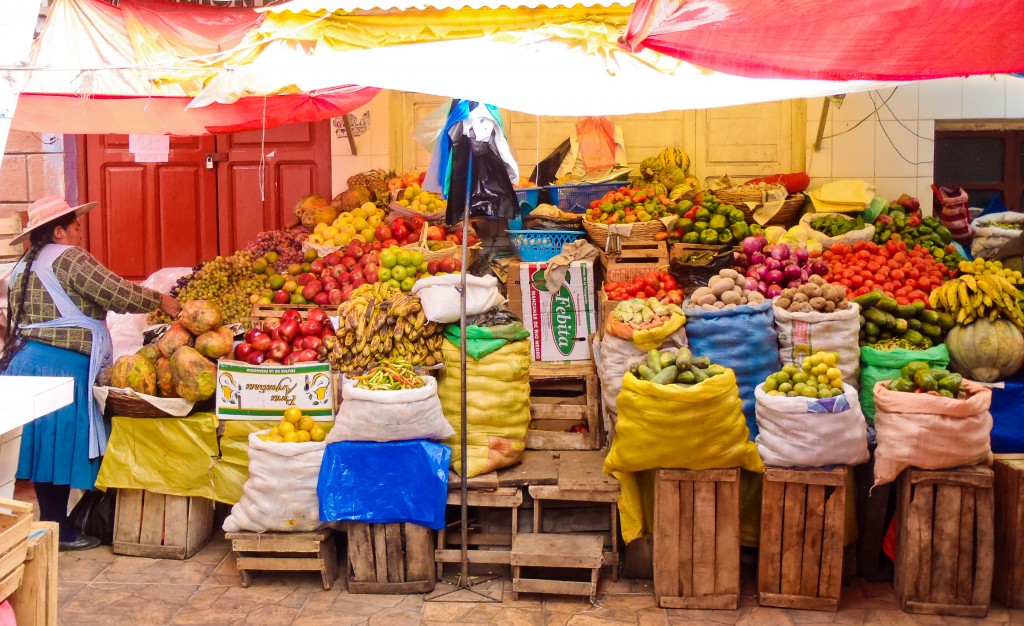
Read More from our Off-Camera Adventure in South America in our Overlanding Story e-book:
